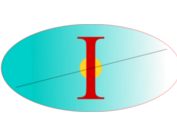Citation:
| vlcek2015.pdf | 864 KB |
Abstract:
In exact density functional theory, the total ground-state energy is a series of linear segments between integer electron points, a condition known as “piecewise linearity.” Deviation from this condition is indicative of poor predictive capabilities for electronic structure, in particular of ionization energies, fundamental gaps, and charge transfer. In this article, we take a new look at the deviation from linearity (i.e., curvature) in the solid-state limit by considering two different ways of approaching it: a large finite system of increasing size and a crystal represented by an increasingly large reference cell with periodic boundary conditions. We show that the curvature approaches vanishing values in both limits, even for functionals which yield poor predictions of electronic structure, and therefore cannot be used as a diagnostic or constructive tool in solids. We find that the approach towards zero curvature is different in each of the two limits, owing to the presence of a compensating background charge in the periodic case. Based on these findings, we present a new criterion for functional construction and evaluation, derived from the size-dependence of the curvature, along with a practical method for evaluating this criterion. For large finite systems, we further show that the curvature is dominated by the self-interaction of the highest occupied eigenstate. These findings are illustrated by computational studies of various solids, semiconductor nanocrystals, and long alkane chains.
Notes:
RBaer-Publication



